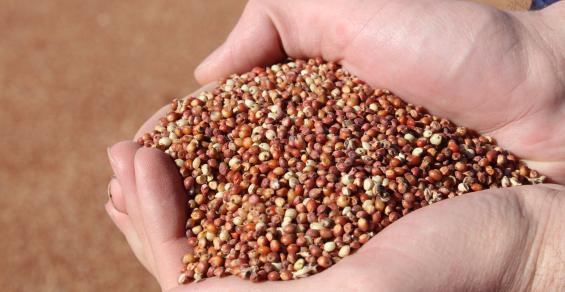Sorghum pricing plus lower production costs equal an unprecedented profit situation at hand.
Whether it’s sustainability, sorghum trade with China or needing to know costs of production to make better marketing decisions, I often feel like every other thing I write is a repeat of something I wrote just weeks or months before. Occasionally, though, a repeat is warranted.
I kicked the year off here writing about the case for planting sorghum in 2022. From basis to cost of production, the key factors have built a strong case that seems to be getting stronger by the day. Could this change tomorrow? Absolutely. However, as I write this, the fundamentals for sorghum, as compared to other crops, are as strong as they’ve been in my decade with this industry.
Profit driving strength
What’s driving this strength? Price and profitability, as always. As I write this, basis across much of the High Plains continues to strengthen with 11 cents over the nearby futures price now feeling like a floor — with some pockets seeing spot-basis bids upward of +62 cents. New crop basis isn’t that strong yet; however, many locations in the sorghum belt have never even had new crop bids this early. Accordingly, the -20-cent opportunities on the Central Plains and +30-cent opportunities on the Southern Plains just north of Lubbock are shocking by historical standards. Think about the pricing opportunities such numbers offer. Today, those bids translate to chances to market sorghum at $5.61 per bushel and $6.11 per bushel, respectively.
China’s role
Why are we seeing so much strength? As usual, China is a significant driver. To date, total export commitments from China and other destinations stand at 245 million bushels, or 79% of the USDA export target just five months into the marketing year. Additionally, commitments from China to purchase sorghum for delivery in the 2022-23 marketing year stand at 2.1 million bushels, representing some of the earliest such commitments in history. Actual shipments are lagging, and political risk is always present; but beyond these factors, the optimism is sky-high and clearly driving bids for grain to be delivered both now and this fall.
Unprecedented situation
Together with these pricing opportunities, advantages in production costs relative to other crops have created an unprecedented profit situation. Parker Vulgamore, star Kansas State University student and new Kansas Grain Sorghum collegiate fellow, recently did a deep dive into the crop budgets published by his university and found sorghum to be the best option on dryland acres in five of six Kansas Extension districts as compared to corn and soybeans. The profitability of sorghum in those districts was 64% higher than the profitability of the next-best option on average; and in the district where sorghum was eclipsed, profitability was only 17% lower than that of the best option — and still 140% higher than that of the third-best option.
The main drivers of these differences were seed, herbicide and fungicide, so even if the prices of fertilizer and herbicide continues to rise into the growing season, sorghum’s advantage will hold, if not grow. This situation is unprecedented, and I look forward to seeing farmers take advantage of these opportunities in 2022. As always, we’ll be here to help in any way we can.
Duff is executive vice president for National Sorghum Producers. He can be reached by email at john@sorghumgrowers.com or on Twitter @sorghumduff.




